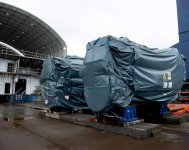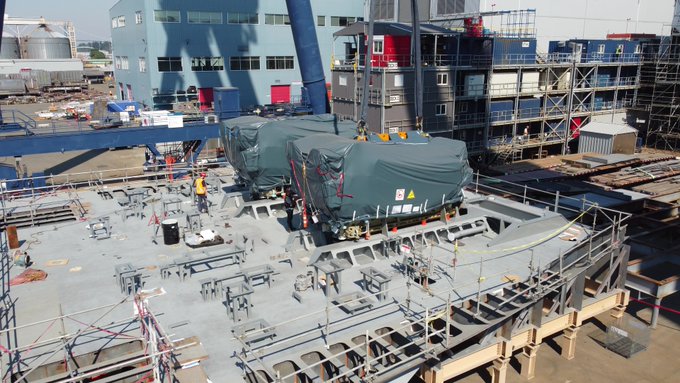Damen lays keel for new RNLN support ship
Damen Shipyards held a keel-laying ceremony for the Royal Netherlands Navy's (RNLN's) new combat support ship (CSS) at its yard in Galati, Romania, on 2 June.
Under current planning the new ship, to be called HNLMS
Den Helder, will be handed over to the RNLN in 2025.
Although construction of the CSS is taking place at Damen's Galati facility,
design and engineering activities were largely carried out in the Netherlands. Construction is expected to be completed in 2023, after which the ship will sail to the Netherlands for final outfitting in Den Helder. This will include installation of the combat management system and self-defence weapons [emphasis added].
The CSS is based on the same design as the RNLN's joint support ship (JSS) HNLMS
Karel Doorman, but smaller and without a sealift capability.
Displacing around 22,400 tonnes fully loaded and with an overall length of 180 m, it will have a crew complement of 75, with accommodation for an additional 85 on board. The vessel will have two replenishment at-sea rigs and, in addition to space for fuel and munition to supply other ships, will be able to carry approximately 20 containers as deck cargo. It will also feature a helicopter deck and hangar and will carry two fast, raiding, interception, and special forces craft and two rigid-hull inflatable boats.

Damen Shipyards held a keel-laying ceremony for the Royal Netherlands Navy's (RNLN's) new combat support ship (CSS) at its yard in Galati, Romania, on 2 June.

www.janes.com






